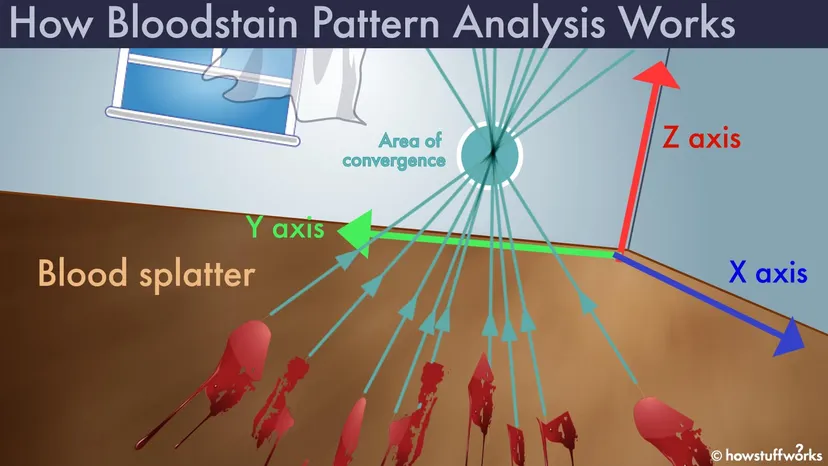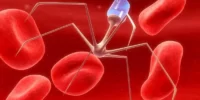Blood Analysis Techniques: From Traditional To Cutting-Edge

Blood analysis techniques have been a vital component of medical research and clinical practice for decades. These techniques have helped healthcare professionals diagnose and monitor a wide range of conditions, from infectious diseases to cancer.
Traditional blood analysis methods, such as complete blood count (CBC) and blood chemistry tests, have been widely used for decades. The CBC test is one of the most basic and commonly used blood tests. It measures different components of the blood, including red blood cells, white blood cells, and platelets. Blood chemistry tests, on the other hand, measure the levels of different chemicals and substances in the blood, such as glucose, electrolytes, and enzymes. These traditional blood analysis methods have been effective in diagnosing and monitoring a wide range of conditions.
However, they are limited in their ability to provide detailed information about the specific molecular and cellular changes that occur in the body. This is where cutting-edge blood analysis techniques come into play. By utilizing advanced technologies, such as enzyme-linked immunosorbent assay (ELISA), polymerase chain reaction (PCR), flow cytometry, mass spectrometry, and microfluidics-based technologies, researchers and clinicians can obtain more detailed information about the molecular and cellular changes that occur in the body.
This article will discuss the various traditional and cutting-edge blood analysis techniques, their advantages and limitations, and their potential future applications.
Key Takeaways
- Traditional blood analysis techniques like CBC and blood chemistry tests are still important in medical research and clinical practice.
- Advanced technologies like ELISA, PCR, flow cytometry, and mass spectrometry provide more detailed information about molecular and cellular changes in blood samples.
- Microfluidic devices can perform a variety of functions in blood analysis, reducing the cost, time, and complexity of traditional techniques.
- Emerging technologies like AI and ML have the potential to revolutionize blood analysis by identifying new biomarkers, developing more accurate diagnostic tools, and predicting disease outcomes for personalized treatment plans.
Complete Blood Count (CBC) Test
The Complete Blood Count (CBC) test is a widely used diagnostic tool in clinical settings to provide a quantitative assessment of the cellular components of blood.
The CBC test measures several parameters including red blood cell count, white blood cell count, platelet count, hemoglobin concentration, hematocrit, and mean corpuscular volume.
The red blood cell count and hemoglobin concentration are important indicators of anemia, while the white blood cell count is a marker of infection or inflammation.
The CBC test is performed using automated blood analyzers that use various techniques to detect and count the different blood cells.
For example, red blood cells are counted using a technique called impedance, which measures the change in electrical resistance as the cells pass through a small aperture.
White blood cells are counted using a combination of fluorescence and light scattering, which allows for the detection and differentiation of different subtypes of white blood cells.
Platelets are counted using impedance or optical methods.
Overall, the CBC test provides valuable information about the cellular components of blood and is an essential tool in the diagnosis and management of many medical conditions.
Blood Chemistry Tests
One of the main diagnostic tools in medicine is the assessment of various biochemical markers present in the bloodstream.
Blood chemistry tests, also known as blood chemistries or serum chemistries, are laboratory tests that analyze the levels of different chemicals and substances in the blood.
These tests provide important information about a patient’s overall health status, as well as specific information about the function and performance of various organs and systems in the body.
Blood chemistry tests can measure a wide range of substances, including glucose, electrolytes, hormones, enzymes, proteins, and lipids.
These tests can be used to diagnose and monitor a variety of medical conditions, such as diabetes, liver and kidney disease, heart disease, and hormonal imbalances.
Blood chemistry tests are typically ordered by a physician as part of a routine physical exam, or as a follow-up to other diagnostic tests or procedures.
The results of these tests can help guide treatment decisions and monitor the effectiveness of therapy over time.
Enzyme-Linked Immunosorbent Assay (ELISA)
Utilizing a highly sensitive detection method, Enzyme-Linked Immunosorbent Assay (ELISA) has revolutionized the field of medical diagnostics, allowing for the detection of small amounts of specific proteins or antibodies in a given sample.
ELISA is a common laboratory technique that employs antibodies to detect the presence of a specific biomolecule, such as a protein, in a biological sample. The assay involves first coating a solid surface, such as a microtiter plate, with the biomolecule-specific antibody, which is then incubated with the sample of interest. If the target biomolecule is present in the sample, it will bind to the immobilized antibody.
Subsequently, a second antibody, which is conjugated to an enzyme, is used to detect the bound target biomolecule. The enzyme converts a substrate into a detectable signal, such as a color change, that can be measured and quantified.
ELISA is a highly accurate and sensitive technique that has found widespread use in medical diagnostics, including the detection of infectious diseases, autoimmune disorders, and cancer biomarkers. The assay can be performed in a relatively short amount of time, with results available in a matter of hours.
One of the major advantages of ELISA is its ability to detect small amounts of biomolecules in a sample, making it an invaluable tool for early disease detection and monitoring. However, like all laboratory techniques, ELISA has its limitations and can be affected by factors such as sample preparation, antibody specificity, and interferences from other biomolecules.
Nonetheless, ELISA remains a powerful diagnostic tool that has contributed significantly to the advancement of medical research and diagnostics.
Polymerase Chain Reaction (PCR)
Polymerase Chain Reaction (PCR) is a widely used laboratory technique that allows for the amplification of DNA sequences, making it an invaluable tool in fields such as genetics, forensics, and medicine. The technique relies on the ability of a heat-stable DNA polymerase, such as Taq polymerase, to extend primers that are complementary to the DNA template. PCR can be used to amplify specific regions of DNA, such as a single gene, or entire genomes. The technique has revolutionized the study of genetics, enabling the analysis of DNA from a single cell or a few molecules of DNA. PCR has also become an important diagnostic tool in medicine, allowing for the detection of infectious agents, such as bacteria and viruses, and genetic disorders, such as cystic fibrosis and sickle cell anemia.
To illustrate the power of PCR, consider the following table:
| Application | Example |
|---|---|
| Human identification | PCR analysis of DNA from a crime scene can help identify the perpetrator |
| Disease diagnosis | PCR can be used to detect the presence of pathogens, such as HIV and hepatitis |
| Genetic screening | PCR can identify genetic mutations associated with inherited disorders |
| Evolutionary biology | PCR can be used to sequence DNA from extinct species |
| Environmental monitoring | PCR can detect the presence of microbial contaminants in water and food |
This table highlights the diverse applications of PCR, from solving crimes to monitoring the quality of our food and water. As a highly sensitive and specific technique, PCR has become an essential tool in modern biology and medicine, and will continue to drive scientific discovery and innovation.
Flow Cytometry
Flow cytometry is a powerful technique that allows for the rapid and simultaneous analysis of multiple characteristics of individual cells or particles. It works by passing cells through a laser beam, which excites fluorescent dyes or antibodies attached to the cells. The fluorescence emitted by the cells is then detected by photomultiplier tubes, which generate signals that are processed by a computer. This allows for the quantification of different parameters such as cell size, granularity, and the expression of specific surface markers.
One of the main advantages of flow cytometry is its ability to analyze large numbers of cells in a short amount of time. This makes it particularly useful in clinical settings, where it can be used to diagnose and monitor diseases such as leukemia, lymphoma, and HIV.
Additionally, flow cytometry can be used in research to study the function and behavior of different cell populations in response to various stimuli. Overall, flow cytometry is a versatile and powerful technique that has revolutionized the field of cell analysis and continues to be a valuable tool in both clinical and research settings.
Mass Spectrometry
Mass spectrometry is a powerful analytical technique that enables the identification and quantification of molecules in complex biological samples. It involves ionizing molecules and then separating them based on their mass-to-charge ratio. The resulting spectra can provide information about the molecular weight, structure, and composition of the sample. Mass spectrometry has become an essential tool in many fields, including biochemistry, proteomics, metabolomics, and clinical diagnostics.
One of the key advantages of mass spectrometry is its ability to detect and quantify molecules that are present in very low concentrations. This is particularly important in clinical settings, where early detection of diseases can be critical for successful treatment. Mass spectrometry can also be used to identify biomarkers that are associated with specific diseases, which can aid in diagnosis and monitoring of disease progression. In addition, mass spectrometry can provide insights into the mechanisms underlying disease states, as well as the effects of drugs and other treatments. Overall, mass spectrometry is a versatile and powerful tool that has revolutionized the field of biological analysis.
| Pros | Cons |
|---|---|
| High sensitivity and specificity | Expensive instrumentation |
| Can detect and quantify a wide range of molecules | Requires specialized training |
| Can provide structural information | Limited sample throughput |
| Can be used in a variety of applications | May require sample preparation that can be time-consuming |
Microfluidics-Based Technologies
Microfluidics-based technologies have emerged as a promising approach for the development of miniaturized and integrated systems that can perform complex biological assays with high accuracy and throughput. These technologies involve the manipulation of small volumes of fluids in micron-sized channels, which can be used for a wide range of applications in blood analysis.
Microfluidic devices are typically made of materials such as polydimethylsiloxane (PDMS) or glass, and can be designed to perform a variety of functions, including sample preparation, separation, detection, and analysis.
One of the main advantages of microfluidics-based technologies is their ability to reduce the cost, time, and complexity of traditional blood analysis techniques. For example, microfluidic devices can be used to automate sample preparation and reduce the amount of reagents and samples required, which can lead to faster and more accurate results.
Microfluidic devices can also be integrated with other technologies, such as mass spectrometry, to create more powerful and versatile analysis systems. As such, microfluidics-based technologies are likely to play an increasingly important role in the development of new blood analysis techniques, particularly in the areas of point-of-care diagnostics and personalized medicine.
Future Directions in Blood Analysis Techniques
Innovative approaches that incorporate emerging technologies and novel analytical methods hold great promise for advancing the field of blood diagnostics. One of the most promising areas of research is the development of point-of-care (POC) devices that can rapidly and accurately detect a wide range of biomarkers in blood samples. These devices could revolutionize the way we diagnose and monitor a variety of diseases, including cancer, infectious diseases, and autoimmune disorders.
Another area of rapid development is the use of artificial intelligence (AI) and machine learning (ML) algorithms to analyze large datasets of blood biomarker data. By identifying patterns and correlations that are invisible to the human eye, these algorithms could help researchers and clinicians identify new biomarkers and develop more accurate diagnostic tools.
Additionally, AI and ML could be used to predict disease outcomes and develop personalized treatment plans for patients based on their unique biomarker profiles. As these technologies continue to evolve, they hold the potential to transform the field of blood analysis and improve the accuracy and speed of diagnoses.
Conclusion
In conclusion, blood analysis techniques have evolved significantly over the years, from traditional methods to cutting-edge technologies.
Complete Blood Count (CBC) test and blood chemistry tests are commonly used traditional techniques for blood analysis.
Enzyme-Linked Immunosorbent Assay (ELISA), Polymerase Chain Reaction (PCR), flow cytometry, mass spectrometry, and microfluidics-based technologies are some of the advanced blood analysis techniques available today. These techniques have revolutionized blood analysis, allowing for faster diagnosis, improved accuracy, and more personalized treatment plans.
Looking towards the future of blood analysis, researchers are exploring new techniques such as microRNA analysis, next-generation sequencing, and proteomic profiling. These techniques offer the potential for even more precise and individualized diagnosis and treatment plans.
With ongoing advancements in technology and an increasing focus on personalized medicine, it is likely that blood analysis techniques will continue to develop and play a critical role in healthcare.









